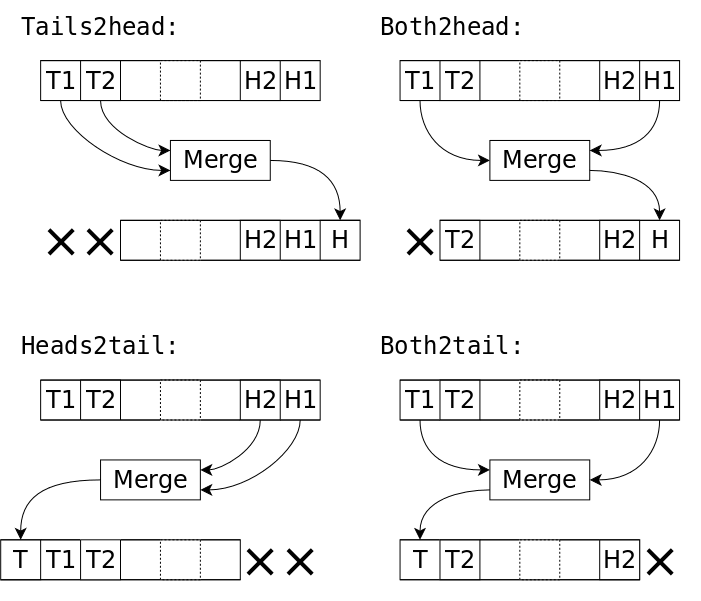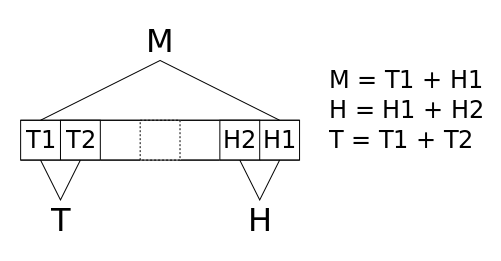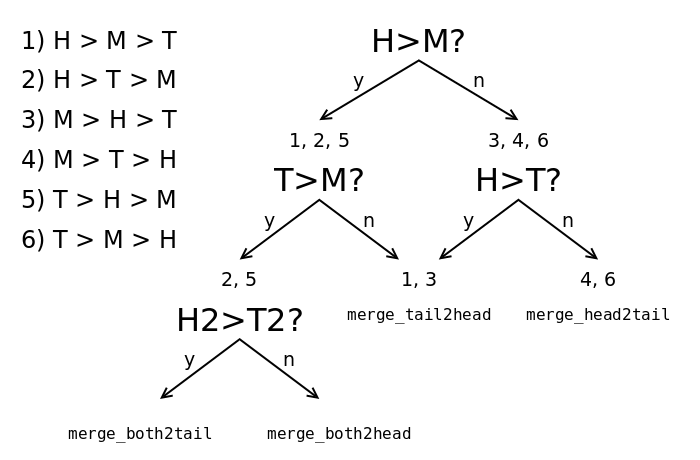YAMS can execute 4 types of merges :
- tails to head
- heads to tail
- both to head
- both to tail

Of course if they are called in random order, the data will be sorted anyway but it wouldn't be efficient, likely close to O(n²). So this is how to use them more efficiently.
Let's simply consider the final size of all the possible moves : there are 3 sizes M, H and T, the sums of consecutive pairs of runs:

There are 3! = 6 possible permutations when we sort their values (ignoring equal results for a moment) and only 4 moves. 4 tests are enough to decide the move since some combinations are degenerate:

The algorithm is most efficient by always choosing to operate on the pair that will give the smallest run. In the case M where there are two possible outcomes, it chooses the direction where the following merge will also give the smallest run as well.
 Yann Guidon / YGDES
Yann Guidon / YGDES
Discussions
Become a Hackaday.io Member
Create an account to leave a comment. Already have an account? Log In.